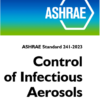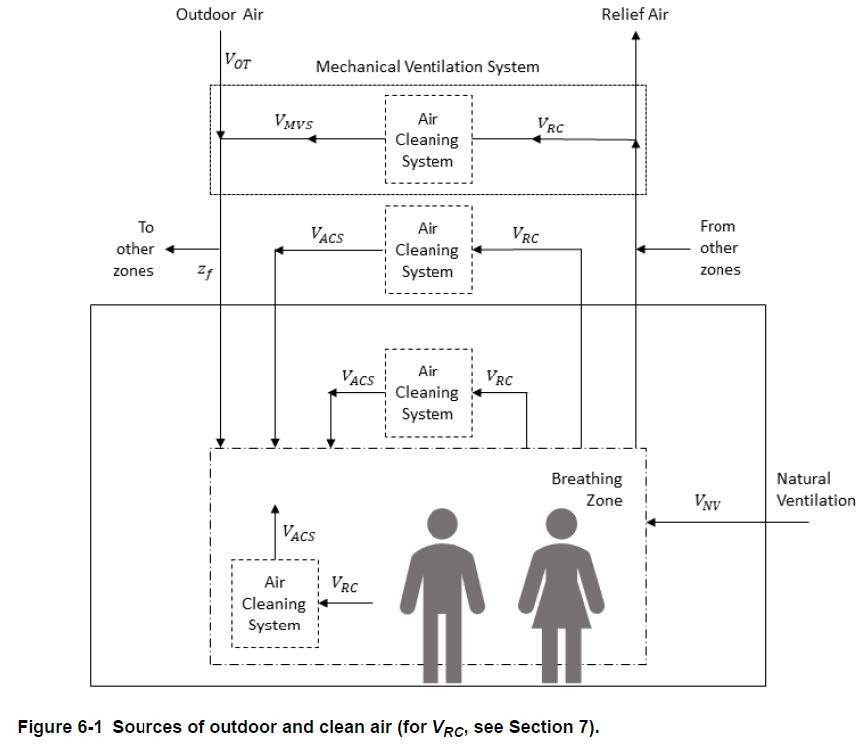
Understanding ASHRAE Standard 241
ASHRAE Standard 241-2023
Control of Infectious Aerosols
You may be hearing a lot about ASHRAE’s Standard 241, which was published in June, and you may be wondering what the significance will be for you, your business, buildings, occupants, and equipment. As a company focused on inactivation of airborne pathogens and improving indoor air quality (IAQ), we're sharing information about Standard 241. Topics include:
- WHO, WHAT, WHEN, WHERE, and WHY of 241 and HOW it was written
- BRP and IRMM and other important terms
- Building risk assessments
- ASHRAE 62 and 241 standard requirements
- Clean air delivery rates
- UVC and 241 application
WHO, WHAT, WHEN, WHERE, WHY and HOW?
In November 2022, the White House asked ASHRAE to develop a “national pathogen control” standard as soon as possible. Within just a few months, the roster, title, purpose, and scope were approved, and then the project committee began.
Leaders in various disciplines such as filtration, UVC, building design, computational fluid dynamics, microbiology, etc. were grouped with leaders from the CDC, ASHRAE, and the Academic world to fast track a standard.
Purpose
The purpose of this standard is to establish minimum requirements for control of infectious aerosols to reduce risk of disease transmission in the occupiable space in new buildings, existing buildings, and major renovations to existing buildings, including requirements for both outdoor air system and air cleaning system design, installation, commissioning, operation, and maintenance.
Approval

In June 2023, ASHRAE approved Standard 241, Control of Infectious Aerosols, for publication.
Addendums to the Standard
There will likely be several addendums published for this standard. The main one of interest to Lumalier is the addition of the GPC 37 upper-air standard. Dr. Vincent, one of the committee members, hopes to have this published by late fall, at which time, the standard will add this as an appendix.
This type of fast-track standard with the addition of addendums may provide a new model for standards.
Additional Details
This standard is not currently required to be implemented, but with early polling, it appears that adoption will be more widespread and quicker than the committee anticipated with some key organizations.
ASHRAE is in the process of building a calculator, but this tool is not ready as of the date of this article (September 21, 2023).
One key point regarding terms used - ASHRAE has removed the term “outside air” and has replaced it with “clean air”, both in this standard and the latest proposed update addendum to 62.1 IAQP. We will be using this term as well as we share information.
IMPORTANT TERMS
Infectious Aerosol:
Airborne particles containing active pathogens capable of causing infection.
Air Cleaning
Reducing infectious aerosol concentration through capture and removal or inactivation.
NOTE: Lumalier has experts in-house to discuss air cleaning technologies, which include mechanical filters and germicidal UV light. As a business, we have been focused on improving indoor air quality through pathogen inactivation, for over 60 years.
Infection Risk Management Mode (IRMM)
The mode of operation in which measures to reduce infectious aerosol exposure documented in a building readiness plan are active.
Building Readiness Plan (BRP)
A plan that documents the engineering and non-engineering controls that facility systems will use for the facility to achieve its goals.
- Summarizes results of assessment and planning exercises and documents measures to be implemented in IRMM.
- Direct descendant of ASHRAE Epidemic Task Force guidance.
Equivalent Clean Airflow (ECA)
The flow rate of pathogen-free air that is distributed uniformly within the breathing zone. This would have the same effect on infectious aerosol concentration as the sum of actual outdoor airflow, filtered airflow, and inactivation of infectious aerosols.
- Concept on which the entire standard depends
- Determine ECA for infection risk mitigation (ECAi)
- Determine total flow rate for spaces, systems (VECAi)
- Figure out how to achieve it during IRMM
ECAi
Requirements for infection risk management are given in terms of equivalent clean airflow rate in units of flow per occupant in a space (ECAi).
The equivalent clean airflow requirement for a space or system can be met not only by outdoor air but also by filtered recirculated air and air disinfected by various other technologies.
This allows flexibility for compliance using combinations of controls that optimize factors such as cost and energy use.
ECAi requirements are based on extensive risk modeling, using inputs supported by peer-reviewed literature wherever possible. This analysis found flow rate per person to be the most useful and scalable way to represent requirements.
Meeting the Equivalent Clean Air Target
- VECAi requirement can be met by
- Outdoor airflow –mechanical/natural
- ECA from multizone air cleaning systems
- ECA from in-room air cleaning systems
- Approach allows maximum flexibility to user
- Limitations on compliance
- Must have prerequisite minimum outdoor air
- To receive credit toward meeting requirements, mechanical filters must be MERV-A 11 or higher (MERV 11 acceptable until 1/1/2025) or equivalent

Chart source: ASHRAE Standard 241, Control of Infectious Aerosols
UVC and ASHRAE Standard 241 Application
What information is needed for effective calculations?
When looking at in-duct UVC systems, there are a number of factors that need to be considered. The following is a list of the parameters needed for design for in-duct UVC using the 241 standard.
- Space Type from Standard 241
- Target ECAi from Standard 241
- Area
- Average Ceiling Height
- Volume
- Total Supply Air
- Total Outdoor Air
- Occupancy - Design (Pz)
- Occupancy - IRMM Target (Pz,IRMM)
- VECAi,t, Des Airflow Target - Design Occupancy
- VECAi,t,IRMM Airflow Target - IRMM Target Occ.
- Central AHU Filter MERV Rating
- Method for Rating Filter
- Filter Pathogen Removal Efficiency
- UV in HVAC - Single Pass Inactivation %
Please contact us with questions or for more information about this list.
How can UVC be applied to disinfect air in a building?
In order to achieve the desired Equivalent Clean Airflow (ECA) for our clients, Lumalier spaces out in-duct UVC lamps at appropriate distances in order to deliver the necessary intensity required for ECA. This is possible even when air is moving at high rates of speed through the air handler.
In addition to in-duct UVC, Lumalier's louvered upper-air UVGI models provide an effective strategy for clean air delivery rates and ECA in a variety of spaces to achieve ACHe.
ACH and ACHe
ACH is the number of times per hour that the total air volume in a room is or space is completely removed and replaced in an hour, while ACHe is the equivalent air changes rate - calculated by adding all air cleaning and ventilation strategies.
- UVC in conjunction with proper calculations can equate to ACHe for increased indoor air quality (IAQ).
- UVC applications using upper air models equates to additional air changes.
Please watch for updates to this article.
With over 60 years focused on inactivation of airborne pathogens, our team is ready to discuss Standard 241, how it applies to your building/project application, and how our products address air cleaning.
Updated January 8, 2024.
